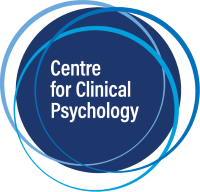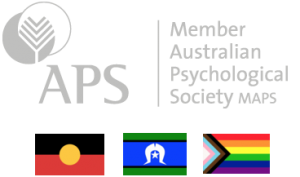Jennifer Smith, Aklile Workneh and Sanni Yaya (2020) completed a systematic review of the barriers and facilitators to help-seeking for individuals with posttraumatic stress disorder. They reported on ten themes that influence help seeking. These are good food for thought for therapists. Understanding, what factors may help or hinder a client getting into and continuing therapy can allow for these factors to be discussed or managed. We present five of the themes here.
Trauma-Related Themes
When PTSD sufferers believe that it would be too difficult to talk to someone about their PTSD symptoms. Believing things such as they will be “emotionally triggered” or “relive the trauma,” or they will “go crazy”. These would act a as barriers to treatment seeking. These statements reflect the belief that avoidance is helpful. In contrast to this Smith and colleagues reported that factors such as receiving an accurate diagnosis of PTSD was an “aha!” moment for some, as it labelled their experience and gave them an explanation for their symptoms. They also described that recognition and acceptance of PTSD acted as a catalyst to help-seeking. Knowing “It’s not me” and what it is can help facilitate getting assistance.
In contrast to avoidance those with worse symptoms of PTSD and symptoms that interfered with daily functioning were more likely to seek assistance. Similarly, some individuals reported being so desperate for relief from symptoms that they had nothing left to lose.
As discussed elsewhere on this blog and highlighted above, it is important for clinicians to keep in mind that distressed individuals can be motivated, and that “treading carefully”, creating preparation sessions might not be needed.
Treatment-Related Themes
Barriers related to treatment described by Smith and colleagues included a range of judgements such as:
The therapy would not be successful (hopelessness).
Being sceptical of the therapy rationale.
Believing the treatment to be ineffective, or even harmful
Believing treatment was only for extreme problems.
Believing treatment would involve loss of control or autonomy.
Believing treatment as something for people who are “weak,” or “crazy,”
Believing PTSD was not treatable.
Believing a provider would prescribe a medication without listening to the patient’s story.
Believing a provider would not consider other treatment such as medication instead of counselling, group therapy instead of individual therapy.
Believing a provider would not understand their problems, believe their trauma narratives.
Believing that describing their trauma(s) “would trigger intense negative feelings.
and that these feelings might interfere with functioning”
Believing that “discussing the trauma would worsen symptoms, overwhelm their coping abilities, or confirm their guilt and responsibility for the trauma”.
Factors that Smith and colleagues described as facilitating treatment included:
Perceiving a need for treatment.
Recognizing that help was available and that the treatment itself is helpful.
Seeing treatment success in others (for veterans)
Receiving effective treatment (psychotherapy and/or psychiatric medication).
Beliefs that talking about the trauma experience(s) would relieve emotional pain.
Beliefs that treatment would “give patients the tools to deal”.
The opportunity to make choices about what treatment to initiate.
Therapist-Related Themes
As you would have thought therapist behaviours that hindered help-seeking included being rude, unfriendly, insensitive, disorganized, and rushing the client. Similarly, therapists being uncaring and untrustworthy was a barrier to therapy. For veterans, attending providers outside of Department of Veterans Affairs another barrier was therapist who did not have expertise in military-related PTSD.
Unsurprisingly Smith and colleagues reported that providers who listened, were empathetic and trustworthy facilitated help seeking. Similarly, competency, caring, offering thorough information on treatment processes and methods to allay patients’ fears, was reported to be significant in help-seeking.
Knowledge-Related Themes
A lack of knowledge and understanding of PTSD or evidence-based psychotherapies and the nature and treatment of mental health difficulties were barriers to care. Additionally, a lack of understanding that sexual trauma can cause PTSD was also cited as a barrier.
Clients were more likely to engage in trauma-focused treatment when they understood and “bought-in” to (i.e., believed in or endorsed) the treatment rationale. Participants were also more likely to engage in therapy when they observed positive effects in some of their peers and thereby considered it a credible treatment option.
Access-Related Themes
Varied access barriers were reported these included cost, expense, and affordability of treatment. Lack of health insurance. Time constraints, such as being unable to take time off work or not having time for treatment, wait times at clinics, clinic location and hours, distance to the clinic, transportation issues, language barriers, and lack of referral by one’s general practitioner (GP), were reported to impede utilization.
Some of the facilitators to access may not be immediately obvious. For example, being unemployed or disabled, and dependent on public insurance were found to be enabling factors for treatment seeking. Similarly, online self-help programs as a preparatory step to more intensive treatments, and open-access scheduling to facilitate shorter or no wait times to treatment, were reported as positives that facilitated access.
Summary
Smith and colleagues (2020) outlined several factors that facilitate or hinder access and involvement in treatment. In considering there systematic review it may also be important to consider cultural factors related to these facilitators or barriers. Some countries have different health systems that may result in different barriers or facilitators, such as the difference between the US and Australian health systems. That being said what can be taken from the review is that some of the barriers and facilitators are within a therapist’s control, such as their own behaviour. Other factors may need to be addressed through psychoeducation before a therapeutic engagement or early on in therapy such as believing treatment would involve loss of control or autonomy. Therapists may benefit from keeping these factors in mind when working with traumatised clients.
References
Smith, J. R., Workneh, A., & Yaya, S. (2020). Barriers and Facilitators to Help-Seeking for Individuals With Posttraumatic Stress Disorder: A Systematic Review. Journal of traumatic stress, 33(2), 137–150. https://doi.org/10.1002/jts.22456



